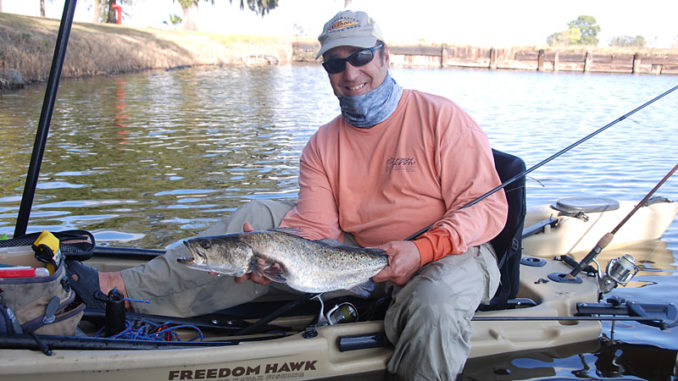
For a fish that looks like it might fall apart once it’s out of the water, speckled trout are a ball to catch. And they put up a great fight on light tackle.
November is one of the best months to hook into some great speckled trout fishing because the fish tend to stack up in large numbers. And cooling temperatures puts more oxygen in the water, and more fight in the fish.
For coastal paddle boat anglers, speckled trout are both a staple and a prized catch. Speckled trout prefer the back bays and estuaries of the coastal Carolinas and this puts them within easy reach of an angler with a paddle in one hand and a rod in the other.
Any discussion of speckled trout fishing should start off discussing where to look to find them this time of year. Seasonal patterns for tend to be more subtle than other inshore species. But that doesn’t necessarily make them easier to find
A no-brainer for trout fishing year-round is to look around the edges of marsh grass. Some of the better locations are grass edges that have deep water within a cast distance of the grass.
For speckled trout, 7 to 8 feet is considered deep and low tide is a favorite among kayak anglers because it reduces the amount of water you have to search. Look for trout pushing bait up against the edge of the channel, but they’ll be near or right off the bottom.
Likely areas
Another no-brainer for trout fishing is to target creek bends, particularly near structure such as boat docks or pilings on the edge or even extending into the drop-off. Look at both sides, but typically the deepest edge of a creek bend will be the outside edge.
Another advantage to dock fishing is that any structure nearby or along the channel edge will also hold redfish and flounder.
Moving in no certain order, another angler favorite location to find speckled trout, particularly in the fall is at the intersection of a tributary and a main creek. Kayak anglers can anchor or stake out just downstream of the rip on a falling tide and catch fish in nearly any direction. The current creates a seam, or rip current, that’s easy to see. In the fall it’s usually better to focus on the shallower side of the rip unless a substantial weather front has pushed trout off the deeper side.
As the month and fall season progresses, kayak anglers may do better finding trout holding on the deeper side of the rip in a bigger creek. The rip may or may not be well defined, but the trout are often off on the deeper side of the current, looking for bait that’s being washed out.
One of the big differences in the Carolina coast versus other parts of the country is the pluff mud, which runs pretty much from just north of Georgetown all the way down to the Georgia border and then some. It’s a unique ecosystem. The muddy bottom tends to limit the amount of speckled trout anglers catch in some areas, because the water clarity over pluff mud is rarely as clear as what’s found on a sandy bottom. Being mostly sight feeders, clear water is a definite advantage for speckled trout.
Regardless, speckled trout thrive in the muddy environment because it is very nutrient rich and creates a lot of feeding opportunities for baitfish and, in turn, for predatory fish. The two terrains fish somewhat similarly but also different at times.
Fall speckled trout fishing along the Carolina coast means locating ambush points where trout will hold and dart out into the current to attack bait, then move back into the lee to wait on the next passing opportunity.
Best Bets
NORTH CAROLINA
WHAT — Speckled Trout
WHERE — Kitty Hawk Bay, Inshore Northern Outer Banks
HOW — Fish popping corks, topwater lures or live baits around the concrete pilings that line the deeper channel waters on the Hwy 12 and 64 bridges early in the day. Then concentrate your fishing efforts using topwater baits and popping corks along long points, grass beds, or bridge funnels over the grass beds.
LAUNCH — A public launch is located at mile post 6.5 on Bay Dr. From Kitty Hawk Bay. Also try dump-in points near the Wright Memorial Bridge crossing from Kitty Hawk to Point Harbor. Two additional bridges go to and from Manteo at Hwy 64.
INSIDER TIP — Trout tend to school up in tighter groups as the water temps cool off, so locating a single fish means most likely others are very close by.
SOUTH CAROLINA
WHAT — Speckled Trout
WHERE — Murrells Inlet, SC
HOW — Target trout in the backwater estuaries, large bays, and inlet adjacent to the Atlantic Ocean. Try casting live or shrimp-imitating lures to grass or shell banks. Trout also favor water along shell banks that reach out from points, especially creek mouths.
LAUNCH — Public access is available at Murrells Inlet’s Public Launch on US17 or at Morse Park Landing.
INSIDER TIP — It’s hard to beat fishing live shrimp under a popping cork. But if the fish seem finicky, try using only a split shot rig, minus the cork.
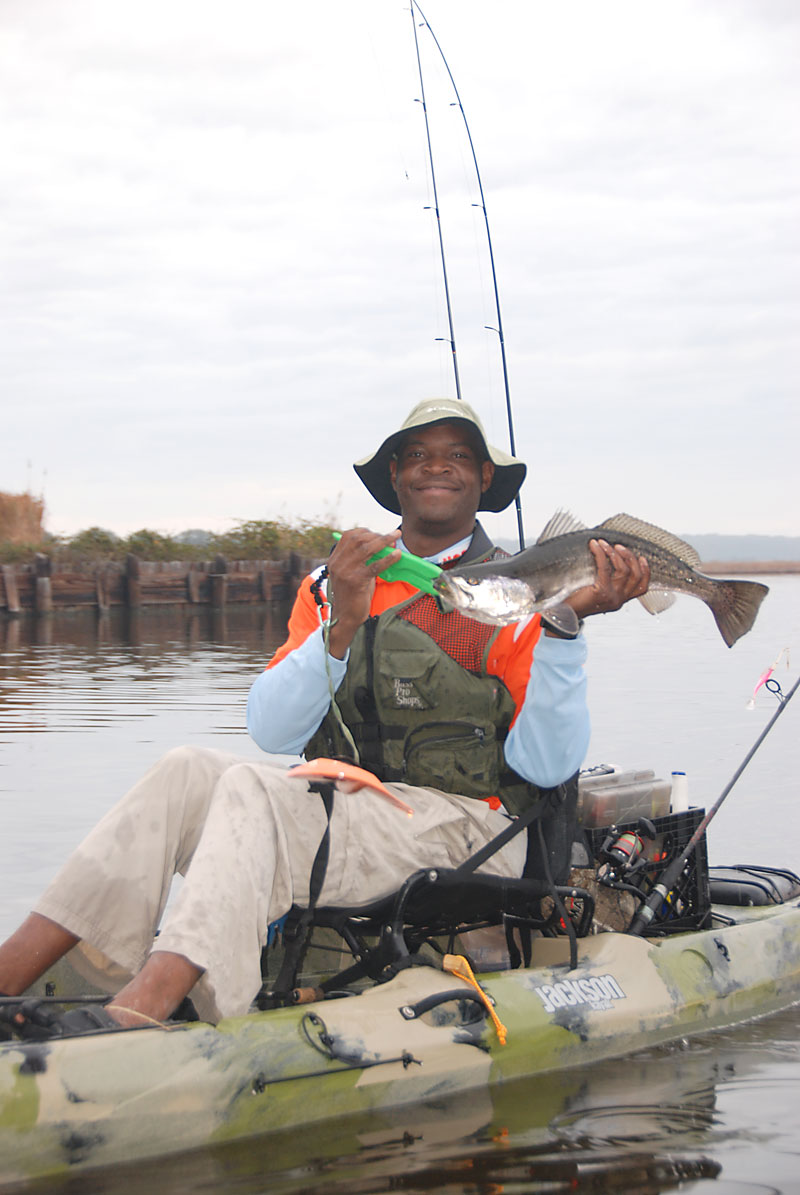
Go with the flow
Many kayak anglers relish the cooler fall weather and look for the trout bite to turn back on as the water starts creeping back down into the low 60s around the middle to the end of October. Coincidentally, the mass exodus of baitfish, primarily shrimp and menhaden, from the marshes tends to spur feeding on a more frequent basis that kayak anglers were used to seeing in the summer.
Regarding trout-holding structure, even newcomers to inshore kayak fishing in the Carolinas can quickly learn what makes it good for fishing simply by being patient and observing the surroundings.
One of the benefits of so much tidal fluctuation is that when the tide goes out, it uncovers the oyster bars, ditches, and other structure that fish will hold on just as soon as the water returns. Anglers can return to those areas and better understand how fish will relate to them.
An average tide on the South Carolina end is 5 feet and near the Georgia line, it is upwards of 7 or 7 ½ feet of total water movement. When that happens, it creates a lot of current but also gives anglers unique opportunities to see the underwater environment at the end of each tide cycle. It’s much easier to see what’s out there, what fish are laying next to, and the structure such as drop-offs, channels, and points.
On the northern end of the Carolinas, the grass flats create an entirely different look – lots of bottom structure where trout can hide anywhere and ambush prey at any point. Surprisingly, many of the same trout fishing tactics work equally well on either end of the Carolinas with a few modifications.

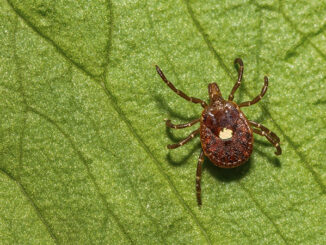
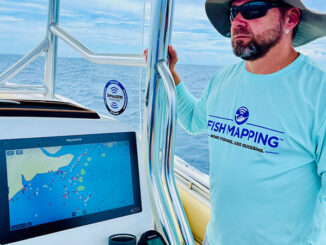
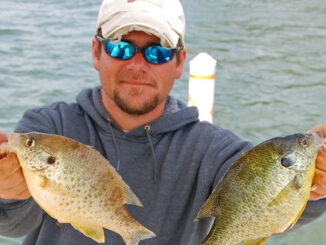

Be the first to comment